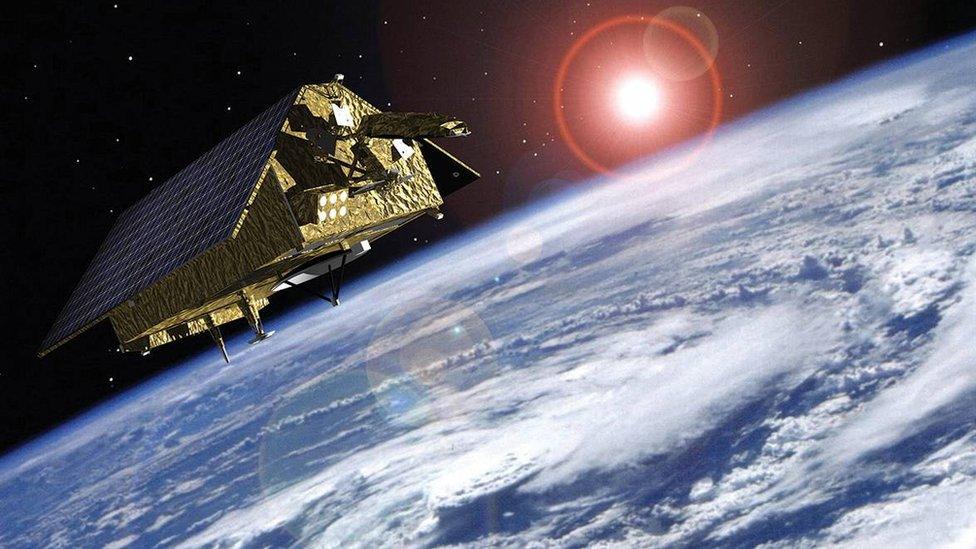Venus and Jupiter conjunction: Sky-watchers witness dawn display
- Published
- comments

Jupiter and Venus were photographed here above Brighton Pier
Jupiter and Venus - the two brightest planets - have appeared together in the morning sky.
The planetary conjunction was visible to the naked eye across much of the UK, with the time before dawn being the best to catch the spectacle.
Experts said the planets were so close as to appear almost on top of each other.
One astronomer said it would probably be "decades rather than years" before they appeared as close together.
While the planets have been visible to the unaided eye, viewers with a telescope have also been able to see Jupiter's four Galilean moons.
People in the UK have taken to social media to share their photos of the planetary display.
Allow X content?
This article contains content provided by X. We ask for your permission before anything is loaded, as they may be using cookies and other technologies. You may want to read X’s cookie policy, external and privacy policy, external before accepting. To view this content choose ‘accept and continue’.
Allow X content?
This article contains content provided by X. We ask for your permission before anything is loaded, as they may be using cookies and other technologies. You may want to read X’s cookie policy, external and privacy policy, external before accepting. To view this content choose ‘accept and continue’.
Allow X content?
This article contains content provided by X. We ask for your permission before anything is loaded, as they may be using cookies and other technologies. You may want to read X’s cookie policy, external and privacy policy, external before accepting. To view this content choose ‘accept and continue’.
Viewed from London, the planets began appearing shortly before 06:00 GMT with the conjunction occurring just after.
Those on high ground with a clear view of the eastern horizon had the best chance of witnessing the planetary display.
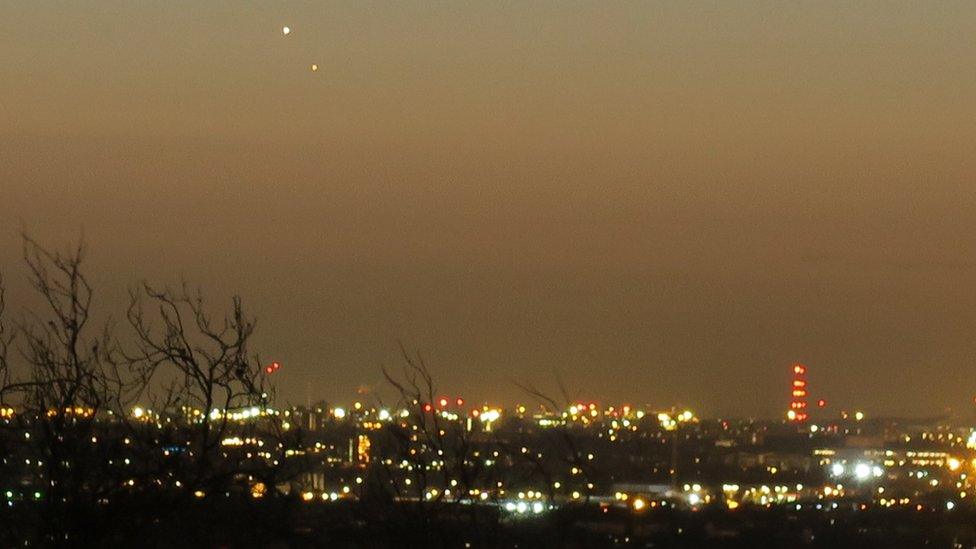
This image of the planetary display was captured by Alexandra Palace in London

The planets were spotted here in the Merseyside skyline
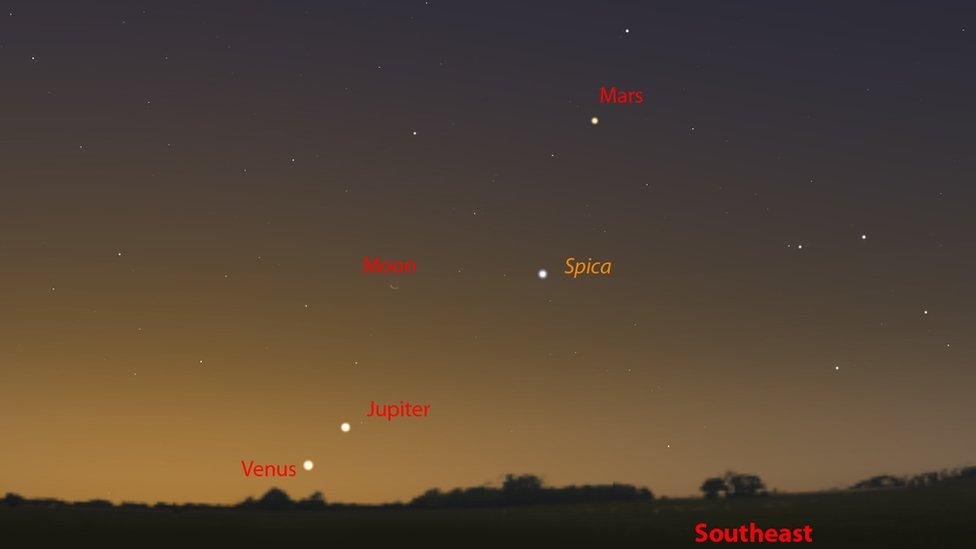
The conjunction of the planets looks like a bright star
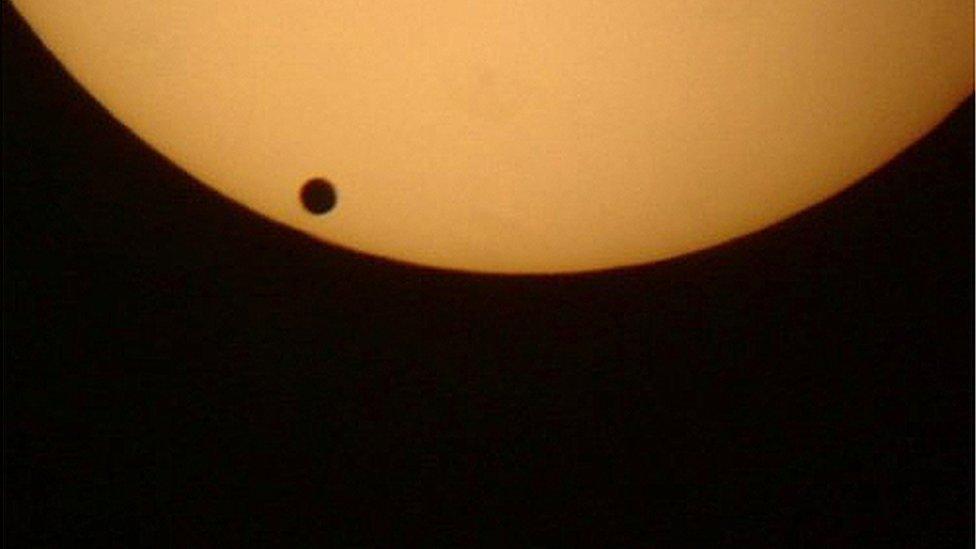
In 2004, the planet Venus could be seen crossing the Sun as a small black dot
Mark Thompson, an astronomer and former presenter on the BBC show Stargazing Live, said conjunctions occur when planets line up in such a way that they appear from Earth to be next to each other - despite in this case being hundreds of millions of miles apart.
Mr Thompson told the BBC the cloudy atmospheres of the two planets made them appear bright to the naked eye.
He said the event was not uncommon - Venus and Jupiter appeared together in 2015 and 2016, also on 13 November - but it was much rarer for them to appear so close to each other.
"There have certainly been cases where they've been close in the sky but they've not been this close in recent years, certainly the last couple of planetary conjunctions.
"This is actually quite a good conjunction because they're so close, and over the next few years they'll pass each other and be close but not this close…
"One as close as this, you're probably looking decades rather than years."
The conjunction can also be seen in countries in the mid-northern latitudes, including parts of the US.
Those who missed the event will be able to see the two planets again on Tuesday morning, but they will not be as close together.
According to Nasa, stargazers will be treated to another planetary pairing later this month, when Saturn will meet Mercury on the western horizon at dusk on 24 and 28 November.
You may also like:
- Published13 October 2017
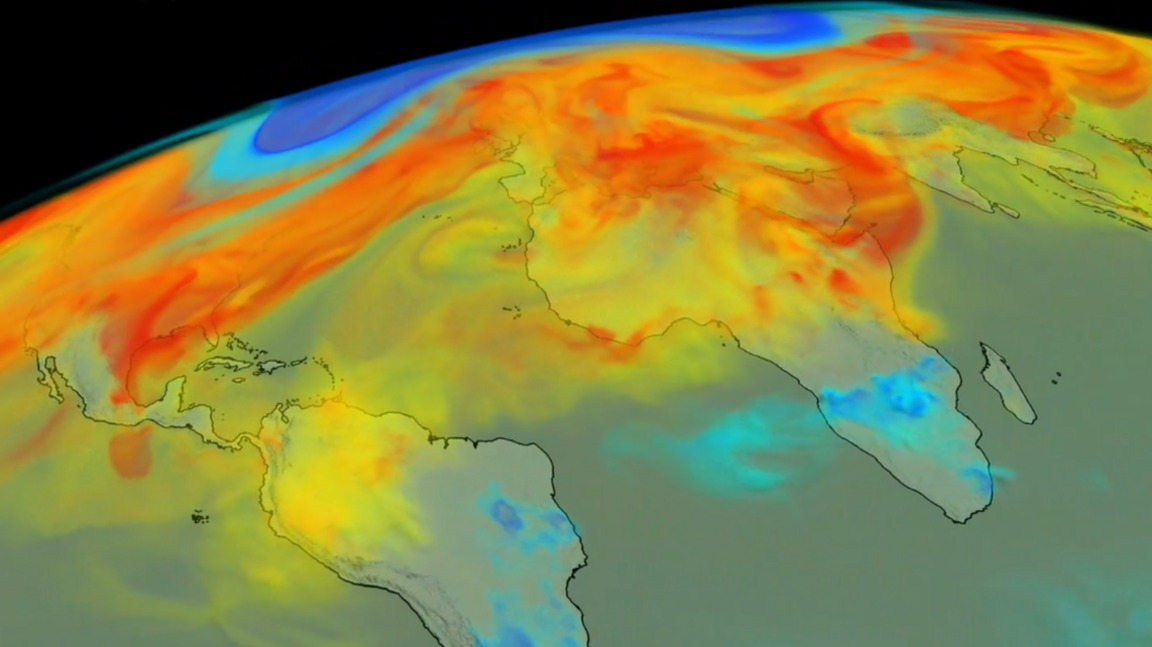
- Published28 September 2017
